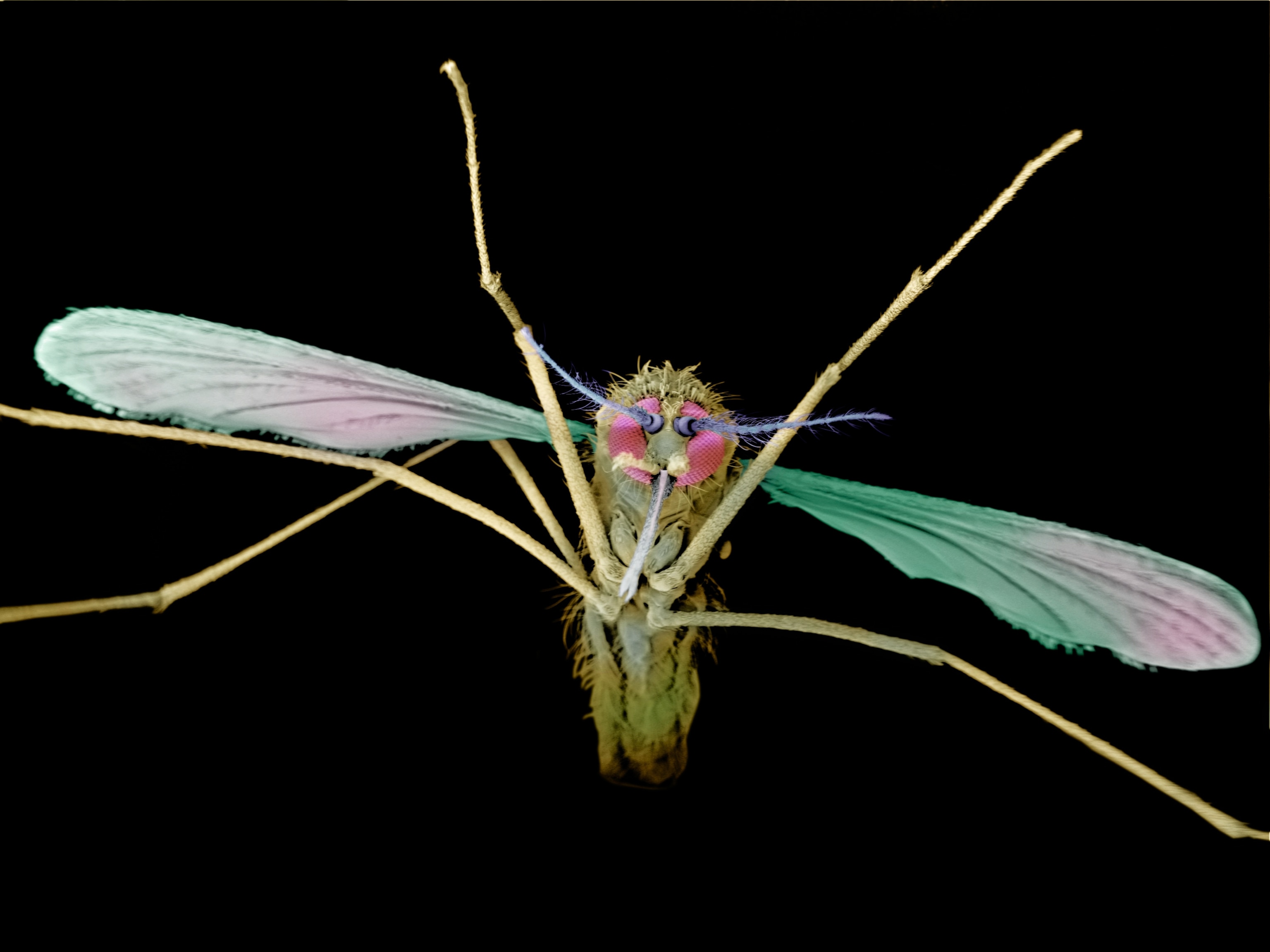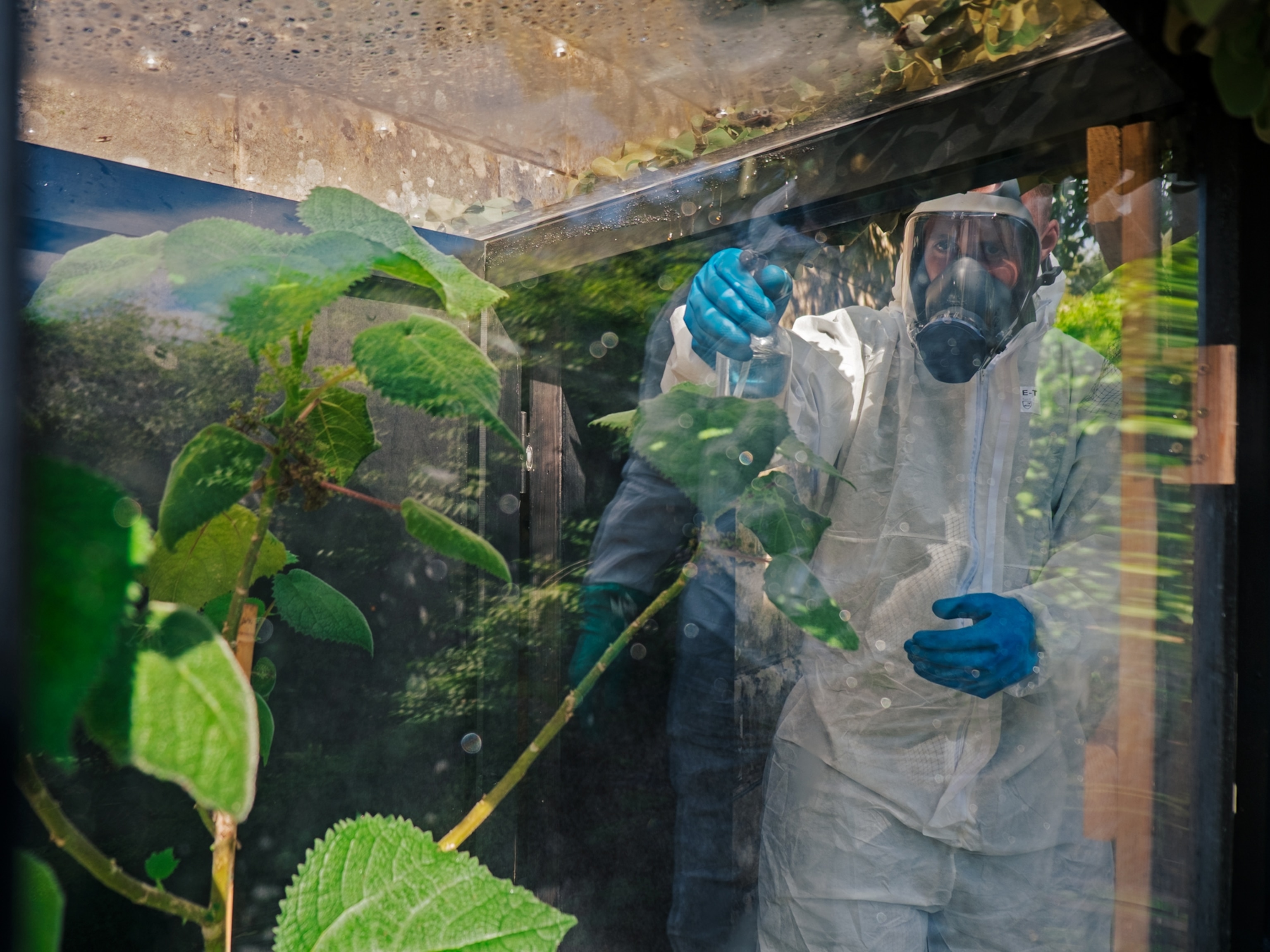
What Makes the Corpse Flower Stink So Bad?
With people (and insects) flocking to the newest corpse flower bloom, we take a look at why this plant is so smelly.
The wait is finally over for Chicagoans who'd been looking forward to inhaling the odor of rotting flesh from a giant, flowering plant. The corpse flower known as Alice bloomed at the Chicago Botanic Garden on Tuesday, redeeming the garden after a corpse flower called Spike let down fans by failing to bloom last month (see the live video feed below).
To humans, the corpse flower is one of the world's stinkiest plants. But to dung beetles and flies, it smells like opportunity.
"It makes them think there's rotten meat somewhere to lay their eggs, and then that helps the corpse flower to get pollinated," Mo Fayyaz, the greenhouse and garden director at the University of Wisconsin's department of botany, told National Geographic in 2013, when another group of crowds were lining up to smell the U.S. Botanic Garden’s putrescent bloom. "It smells bad to us, but it smells great to flies."
Many are chronicling their encounters with the fetid flower on social media—and it sounds like the wait was worth it.
So why so much love for this malodorous bloom?
Our own Erika Engelhaupt writes that it might have something to do with benign masochism, a way of taking our noses—and our emotions—for a test drive in a smelly but safe environment.
Why So Smelly?
Native to Indonesia, the corpse flower favors high heat and humidity and ample space.

Calling it a flower is actually a misnomer: it comprises several flowers that cluster around the base of the stalk (the spadix), hidden by the plant’s maroon skirt (the spathe). And, looking at its giant stalk, one can imagine the inspiration for its Latin name, Amorphophallus titanum. (David Attenborough coined the name titan arum as a more PG alternative).
Its distinctive perfume comes from a number of different molecules that smell bad on their own, and that together draw flies, beetles, and people to the plant’s cup-like bloom. One of these, timethylamine, smells like rotting fish. Another, isovaleric acid, is the cheesy, sweaty odor responsible for terrible gym sock smells.
"What the flowers are doing is putting out these sulfur-ridden odors, and this is the magic button for these flies," Rob Raguso, a chemical ecologist and associate professor at Cornell University, told National Geographic. It’s also heating up—the bloom actually reaches human body temperature, making it all the more convincing to flesh-loving insects. "The flies fly in from a distance, land, and then look for dark places within the flower to lay their eggs."
According to McLaughlin, the pollinators wedge themselves into the corpse flower's tight spaces, attracted by the overwhelming smell of carrion. In the process, they become covered in pollen.
With any luck, they’ll go on to pollinate the next stinky flower in their path.
Rachel A. Becker, Lara Sorokanich, and Melody Kramer contributed reporting and writing to this piece. Follow Rachel A. Becker on Twitter.





